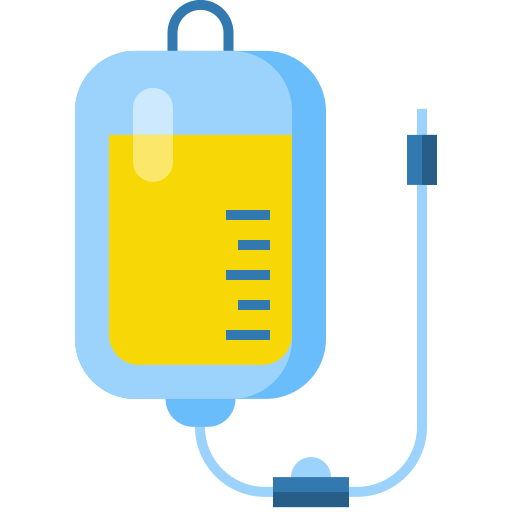
Intravenous Fat Emulsion
10%
Orion Infusion Ltd.
Product Details
Description
This is a preparation of 10% refined soyabean oil intended to be used as an intravenous nutrient. This prevents Essential Fatty Acid Deficiency (EFAD) and corrects the clinical manifestations of EFAD. However, for patients requiring complete parenteral nutrition, complementary vitamin supplements are required. This are prepared from either soyabean or safflower oil and provide a mixture of neutral triglycerides, predominantly unsaturated fatty acids. The major components of fatty acids are linoleic, oleic, palmitic acids. In addition, This contains 1.2% egg yolk phospholipids as an emulsifier and glycerol to adjust tonicity. IV Fat emulsions are isotonic and may be given by central or peripheral venous route. This is formulated as a concentrated source of energy to be used together with carbohydrates and amino acids in parenteral nutrition, it is isotonic, and provides a source of basal phosphate requirements and a source of vitamin E.
This is a source of calories and essential fatty acids for patients requiring parenteral nutrition for extended periods of time (usually for >5 days). It is a source of essential fatty acids when a deficiency occurs. Part of the intravenous diet in all parenteral nutrition indications including: Preoperative and postoperative nutritional disturbances where an improved nitrogen balance is required; Nutritional disorders or disturbances of nitrogen balance due to inadequate or failing intestinal absorption caused by tumours in the gastrointestinal tract, acute or chronic intestinal diseases (peritonitis, ulcerative colitis, terminal ileitis); Burns, to reduce the frequently excessive nitrogen losses; Prolonged unconsciousness, eg. following cranial trauma or poisoning in cases where enteral feeding is inappropriate or impossible; Impaired renal function where a concentrated source of energy may be indicated to reduce protein breakdown; Cachexia and Patients with essential fatty acid deficiency who cannot maintain or restore a normal essential fatty acid pattern by oral intake.
This is contraindicated in conditions with severely disordered fat metabolism, such as in severe liver damage and acute shock. Hypersensitivity to egg-, soya- or peanut protein or to any of active substances or excipients.
This IV infusion may cause a rise in body temperature (incidence <3%) and, less frequently, shivering, chills and nausea/vomiting (incidence <1%). Reports of other adverse events in conjunction with 10% fat emulsion infusion are extremely rare, less than one report of certain events per one million infusions. Hypersensitivity reactions (anaphylactic reaction, skin rash, urticaria), respiratory symptoms (tachypnoea) and circulatory effects (hypertension, hypotension) have been described. Thrombosis, haemolysis, reticulocytosis, abdominal pain, tiredness, priapism and neurological adverse reactions including headaches, flushing, dyspnoea, slight pressure over the eyes and dizziness have been reported.
No data found
This injection contains soya oil and egg lecithin which may rarely cause allergic reactions. Cross allergic reaction has been observed between soya-bean and peanut. Fat metabolism may be disturbed in conditions such as renal insufficiency, uncompensated diabetes, pancreatitis, certain forms of liver insufficiency, metabolic disorders and sepsis. This injection should be administered with caution as a strong correlation exists between C-reactive protein and the agglutination of This injection in seriously ill patients. This injection should be given with caution to neonates and premature infants with hyperbilirubinaemia and in cases with suspected pulmonary hypertension. In low birthweight infants, the risk of lipid infusions may outweigh potential benefits due to further diminution of defences against infection. In infants, metabolism of lipids in peripheral tissues may be diminished by infection and heparin administration. In neonates receiving long term parenteral nutrition, particularly premature neonates, platelet count, liver function tests and serum triglyceride concentration should be monitored. Use in Pregnancy & Lactation: Absolute safety of the foetus and the nursing infant has not been established. Therefore, This injectionTM should be administered with caution during pregnancy and lactation.
Impaired capacity to eliminate this may lead to fat overload syndrome as a result of overdosage. It may also occur at recommended rates of infusion in association with a sudden change in the clinical condition such as renal function impairment or infection. Fat overload syndrome is characterised by bone marrow depression, anaemia, thrombocytopenia, hepatosplenomegaly, splenomegaly, hyperlipaemia, fever, fat infiltration, focal seizures and shock. All symptoms are usually reversible if the infusion of this is discontinued.
Parenteral nutritional preparations
Store at room temperature (not exceeding 25° C). Protect from freezing and light. Emulsion which has been frozen should be discarded. Any remaining emulsion from an opened bag must be discarded. Do not use if the emulsion is discolored. This contains no preservatives.
-
Support 24/7
Call us anytime -
100% Safety
Only secure payments